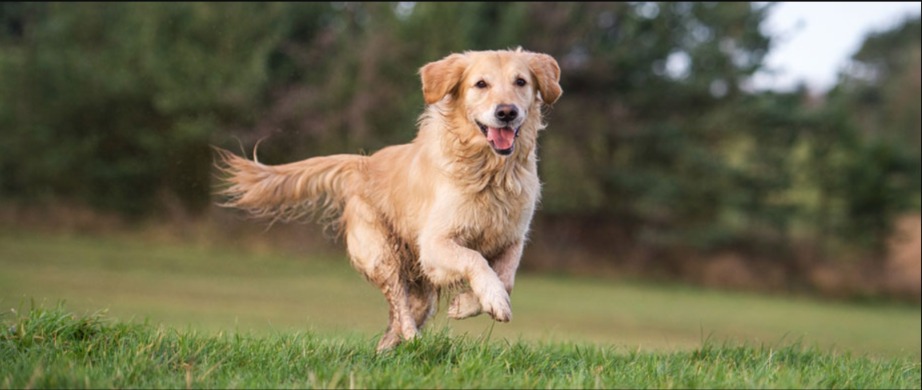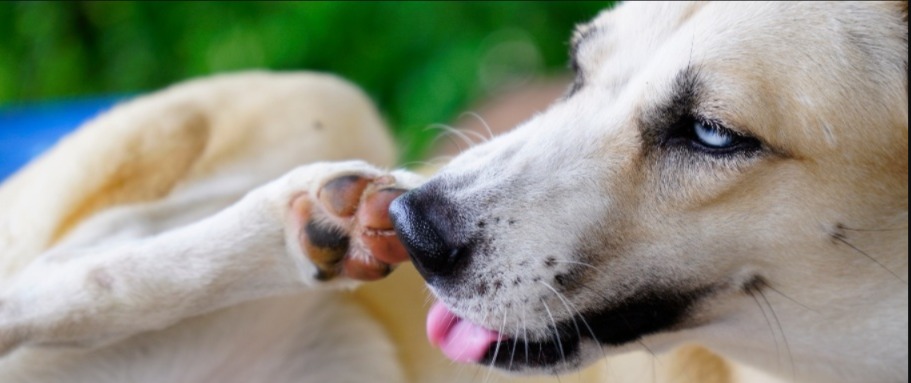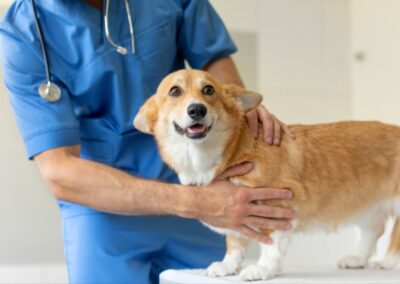
When Your Dog’s Joints Whisper — Listen.
You’ve seen it before. Your dog used to explode out the door at the word walk. Now you have to ask twice. Maybe three times.
There’s hesitation where there used to be joy. That spark? It’s still there — but something in the body isn’t keeping up.
And nine times out of ten, the problem starts in the joints.
The truth is, joint pain doesn’t hit overnight. It sneaks in. A little stiffness here, a slow rise there.
Before you know it, your once-bouncy sidekick is calculating whether that couch is worth the climb. It’s not laziness. It’s discomfort — and it’s on you, the human, to notice before it steals the spark for good.
The Silent Strain Beneath the Fur
Every leap, twist, run, and zoomie comes with a cost. Those knees, hips, elbows, shoulders, and tiny ligaments are doing Olympic-level work every single day.
When they’re young, it’s easy to take it for granted — “She’s fine! He’s built for this!” — but even the toughest working dogs can wear down their joints if we’re not paying attention.
Age is a big factor, yes, but let’s be honest: it’s not the only one. A dog carrying too much weight is putting extra pressure on every joint, every day.
That’s like you walking around with a backpack full of bricks for a decade. Eventually, something gives.
Then there are injuries — the torn ligaments, the awkward landings, the roughhousing gone wrong. Sometimes they heal, but not quite right.
And that “not quite right” becomes the start of a slow spiral toward pain.
Certain breeds draw the short straw genetically.
German Shepherds, Labradors, Golden Retrievers, and other large breeds often face hip or elbow dysplasia, even with great care.
Smaller breeds aren’t immune — they just show it differently. But here’s the key: genetics set the stage, lifestyle writes the script.

Spot the Subtle Signs Before It’s Too Late
Dogs are stoic. They won’t grab their knee and say, “Hey, this hurts.” They’ll adapt. They’ll compensate. That’s why it’s up to you to play detective.
Watch for these quiet clues:
They stop chasing the ball as far. They hesitate before jumping into the car. They circle longer before lying down.
They start licking or chewing one particular spot. Sometimes, they even get cranky — pain can do that to anyone.
And don’t fall for the “he’s just getting older” excuse. Age isn’t the cause of pain; it just makes the weak spots more obvious.
When movement changes, when routines slow — something’s talking to you through that behavior. Listen.
The Game Plan: Strength, Motion, and Smart Choices
So what do you do once you suspect joint issues? You start by facing the truth. Ignoring it doesn’t make it go away. This is where you team up with your vet.
They’ll assess range of motion, maybe take X-rays, maybe prescribe supplements or anti-inflammatories. But medicine alone isn’t the magic wand — management is.
Let’s start with the simplest — and most powerful — fix: weight.
Every extra pound on your dog translates into pressure on the joints. Shave off the fat, and you instantly reduce stress. Think of it as joint insurance.
Combine that with high-quality food rich in omega-3s, glucosamine, and chondroitin — the building blocks of cartilage and comfort — and you’ve got a foundation.
Next: movement.
It sounds counterintuitive — “My dog’s in pain, should they move?” — but yes, the right kind of motion heals.
Controlled walks, gentle swims, even light play on soft ground help keep muscles strong and joints lubricated. Immobility is the real villain.
Muscles weaken, weight piles on, and joints suffer even more.
Movement — smart, steady, safe — is medicine.
Then there’s comfort.
Hard floors and cold tiles are the enemy. Get a supportive bed, one with real cushioning that cradles the joints. Ramps can help small or senior dogs avoid stressful jumps.
And in cold weather? Keep them warm. Stiffness loves the cold.

The Senior Secret: Adapt, Don’t Stop
As dogs grow older, their needs shift — but that doesn’t mean their spirit dims. The trick is adapting. You shorten the walks but make them daily.
You ditch the Frisbee marathons but add gentle stretches. You keep them engaged, because the mind fuels the body.
Regular checkups help catch issues before they snowball. Your vet might suggest supplements or pain-relief options that make a world of difference. The key is consistency — not waiting until it’s “bad enough.”
Because here’s the raw truth: dogs live in the now. They won’t mope about tomorrow’s pain. They’ll still try to follow you down the hall even if it hurts.
That’s loyalty. And it deserves your best effort in return.
The Bottom Line
Healthy joints are the unsung heroes of a happy dog life. They’re what power every jump, every run, every cuddle that begins with a sprint toward you.
Protecting them isn’t a luxury — it’s love in motion.
So take a minute today. Watch how your dog moves. Notice the little things. Keep the weight right, the movement steady, and the comfort high.
That’s how you make sure every wag, every walk, every wild dash stays possible.
Because joint health isn’t about bones and cartilage. It’s about freedom — the freedom to live, play, and love without pain.
And if that’s not worth fighting for, what is?



